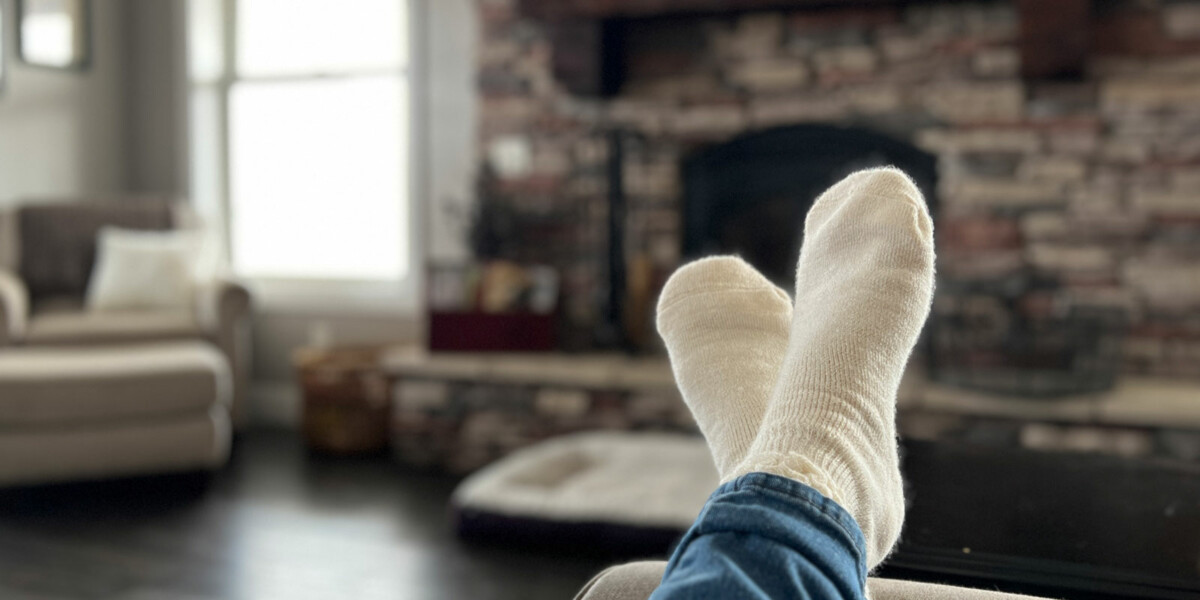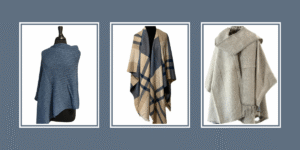As people come and go from our farm, they always ask about buying 100% alpaca socks. Do we have any of these socks for sale, are they worth buying, are they warm?
The answer is no we do not offer 100% alpaca socks and I don’t believe they are worth buying. But let me explain why…
Alpaca fiber is amazing, and I love wearing it on my feet, hands, head, and in sweaters. There is no mistake about the value of alpaca fiber. The important thing to know is that not all alpaca fiber is created equal. Just the opposite. Alpaca comes in various grades (level of softness) and it can be used in various ways.
Putting 100% alpaca into a pair of socks is not the best use and it will lead to many people being disappointed with their purchase.
This is not a statement I make without research. I bought two different pairs of 100% alpaca socks to try them out. I made sure they were from reputable sources so I could make sure it was really alpaca fiber. I wanted to do this so I could decide if it was something I wanted to carry in our farm store. It’s not and I’ll tell you why.
Here’s why I don’t think 100% alpaca socks are a great idea:
- For the socks to be true 100% alpaca fiber, they will most likely be handmade. By default, this makes them not as robust as a sock made on a machine. They cannot stand up to traditional wear in boots or on hardwood floors. They are meant for lounging or wearing to bed.
- These handmade socks will come with larger knit patterns than a machine-made sock. This allows air to get through and they won’t be as warm as traditional alpaca socks.
- These 100% alpaca socks will be from grades 2 or 3 fiber, which is baby or superfine alpaca. These grades are meant for making a hat, a pair of gloves, a scarf, or a sweater, and these softer grades are not meant for your feet. This softer fiber will be floppier and it will be too stretchy for what you’d want in socks.
- Anything in 100% alpaca fiber must be hand-washed and lined dry. If you are buying 100% alpaca socks and they say they can go in the washing machine, don’t believe that information and don’t buy the socks. That is conflicting information, and something is not right. And yes, I’m referring to Amazon and the products they sell that are not as they claim.
In reality, here is the biggest reason I’ve decided not to make or resell 100% alpaca socks:
As a sock manufacturer and seller, I cannot control how people wear their socks and how they wash their socks.
I know this because I’ve had people buy products and complain about the durability only to discover they failed to follow washing instructions. Some people will throw alpaca clothing into the wash like a chemical-based, polyester product and this won’t work. Not following the use and care instructions will always leave you disappointed because you’ll end up shrinking products, felting products, or creating fuzz.
In the end, it was the buyer’s fault for not reading and following instructions. However, humans are just that. We’re human and we make mistakes. And I’ve done my share. I’ve had my favorite alpaca socks sneak into the dryer via a covert operation that was led by a pair of pants harboring the stowaway.
If you put a pair of 100% alpaca socks into the dryer by mistake it is going to come out looking like you bought them for your daughter’s Barbie. And man will you be disappointed.
The key to being happy about your purchase of alpaca socks is to think about how you will wear them. For example:
- Outdoor and boot socks are made for work activities and colder weather. These will be thicker socks and most likely made from a grade 3 or 4 fiber.
- Therapeutic socks are made for a loose and relaxed fit. These are generally worn in the house or office. They are a lighter-weight sock that won’t offer the same warmth as an outdoor boot sock. And the important thing is this type of sock isn’t meant to compete with an outdoor boot sock, because it has a different purpose.
- A no-show or ankle sock for golf certainly won’t offer the same warmth level as an outdoor boot sock and it won’t be as loose as the therapeutic sock mentioned above. Instead, it will provide a slim, tighter fit that can be easily worn in any type of athletic shoe.
- A ski sock will be warm, yet tight to fit into ski boots. It will have a secure band at the top to keep them in place during all the twists and turns on the slopes. It will be about knee length so it can cover your leg inside your taller ski boots.
Four different scenarios, four different fits, and four different types of alpaca socks.
If you are still dead set on buying 100% alpaca socks, here are a few tips to make sure your purchase is a good one:
- Make sure you buy from a local farm and not on Amazon or Etsy. This way you’ll have a higher confidence level that what you are buying is really what the product description claims. Read more about this in my post titled Where Are Your Alpaca Products Really Coming From?
- Look for the country of origin. It should either be the USA or Peru. You’ll notice a lot of socks on Amazon or Temu that claim to be alpaca are actually made in China and their materials are not at all reliable.
- Don’t expect the 100% alpaca socks to be as warm as other alpaca socks. Again this is due to the loose knit.
- Watch for red flags like product descriptions stating machine wash, high durability, etc.
- Make sure you use the socks for indoor use only.
- Make sure you handwash the socks in cool water and baby shampoo. Once done, use a towel to pull excess water out, then lay flat to dry.
If you’d like to browse for socks that are not 100% alpaca, head on over to our online store. You’ll find a good selection of alpaca socks from outdoor and super warm to lounge and golf socks.





I wish you would offer 100% alpaca socks. My brother-in-law has a skin condition, and he can’t wear any socks except for 100% alpaca. They are the only ones that don’t react with his skin. He can’t even have 90% alpaca and 10% Lycra as it ends up being an irritant. Everywhere I’ve gone to find them, they’ve stopped being sold. There used to be so many places you could get them. There are people who say theirs are 109% alpaca, but you find that the fine print says “33% alpaca” and the rest is synthetic… But even 90% won’t do…
Sara this is an interesting situation and one we need to consider solving.
What materials does his skin tolerate? Now that we have our own sock machine in house, we have more flexibility it what we offer.